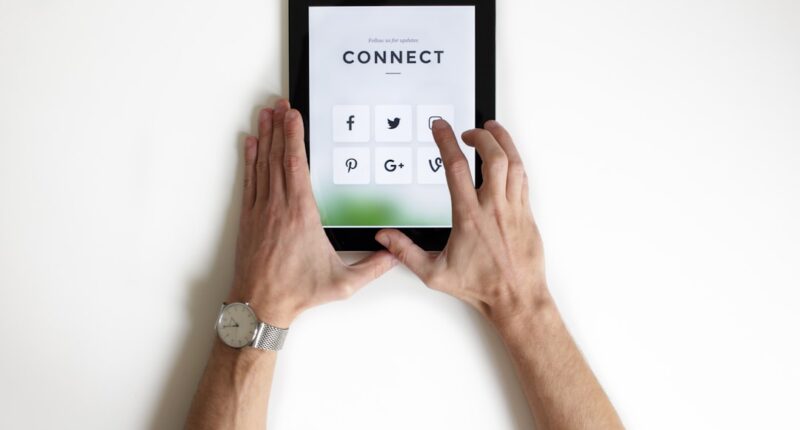Effective communication is essential in all aspects of life, whether it’s in personal relationships, professional settings, or even in casual interactions. It is the foundation of successful relationships and the key to resolving conflicts. When communication is clear, open, and honest, it fosters understanding and trust between individuals. In a professional setting, effective communication is crucial for productivity, teamwork, and the overall success of an organization. It ensures that everyone is on the same page, working towards common goals, and can prevent misunderstandings that can lead to costly mistakes. In personal relationships, effective communication is vital for expressing emotions, resolving conflicts, and building strong connections with others. It allows individuals to feel heard and understood, which is essential for maintaining healthy and fulfilling relationships.
Furthermore, effective communication is also important for personal growth and self-awareness. When individuals are able to express themselves clearly and assertively, they are more likely to have their needs met and their boundaries respected. It also allows for better self-expression and the ability to articulate thoughts and feelings. In addition, effective communication can also lead to improved mental and emotional well-being. When individuals feel heard and understood, it can reduce feelings of isolation and loneliness, and increase feelings of connection and belonging. Overall, effective communication is the cornerstone of successful relationships, both personally and professionally, and is essential for overall well-being.
Key Takeaways
- Effective communication is crucial for successful relationships and teamwork in any setting.
- Different communication styles exist, and understanding them can help improve interactions with others.
- Active listening involves fully engaging with the speaker and providing feedback to ensure understanding.
- Nonverbal cues such as body language and facial expressions play a significant role in communication.
- Overcoming communication barriers requires patience, empathy, and a willingness to adapt to others’ needs.
- Conflict resolution can be achieved through open communication, active listening, and a focus on finding common ground.
- Practicing empathy in communication involves understanding others’ perspectives and emotions to build stronger connections.
Understanding Different Communication Styles
Communication styles can vary greatly from person to person, and understanding these differences is crucial for effective communication. Some individuals may be more direct and assertive in their communication style, while others may be more passive or indirect. Some people may be more expressive with their emotions, while others may be more reserved. Understanding these differences can help individuals navigate conversations more effectively and adapt their communication style to better connect with others. It’s important to recognize that there is no right or wrong communication style, but rather a spectrum of styles that can be effective in different situations.
Moreover, cultural differences can also play a significant role in communication styles. Different cultures may have varying norms and expectations when it comes to communication, such as the use of gestures, tone of voice, or personal space. Being aware of these cultural differences can help individuals avoid misunderstandings and misinterpretations when communicating with people from different backgrounds. Additionally, understanding different communication styles can also help individuals become more empathetic and open-minded when interacting with others. By recognizing and respecting different communication styles, individuals can foster a more inclusive and harmonious environment in both personal and professional settings.
Active Listening Techniques
Active listening is a fundamental skill in effective communication that involves fully engaging with the speaker and demonstrating genuine interest in what they have to say. This means giving the speaker your full attention, maintaining eye contact, and using verbal and nonverbal cues to show that you are actively listening. It also involves asking clarifying questions, summarizing what the speaker has said, and providing feedback to ensure that you have understood their message accurately. Active listening is not only about hearing the words being spoken but also about understanding the underlying emotions and intentions behind the message.
Furthermore, active listening requires individuals to set aside their own thoughts and judgments while the speaker is talking, allowing them to fully absorb the information being conveyed. This can be challenging at times, especially when the topic being discussed is emotionally charged or when there are conflicting viewpoints. However, active listening is essential for building trust and rapport with others, as it shows that you value their perspective and are willing to engage in meaningful dialogue. By practicing active listening techniques, individuals can improve their communication skills and strengthen their relationships with others.
Nonverbal Communication Cues
| Nonverbal Communication Cues | Description |
|---|---|
| Facial Expressions | Signals emotions and reactions |
| Body Language | Gestures, posture, and movement |
| Eye Contact | Indicates interest and attention |
| Tone of Voice | Conveys emotions and attitudes |
| Personal Space | Reflects comfort and intimacy levels |
Nonverbal communication plays a significant role in how messages are perceived and understood. It includes body language, facial expressions, gestures, posture, tone of voice, and even personal space. These nonverbal cues can often convey more meaning than words alone and can greatly impact the effectiveness of communication. For example, a person’s body language can indicate their level of interest or engagement in a conversation, while their tone of voice can convey emotions such as anger, excitement, or sadness. Understanding these nonverbal cues is essential for interpreting the true meaning behind a message and for responding appropriately.
Moreover, nonverbal communication can also be used intentionally to enhance or emphasize verbal messages. For instance, using hand gestures to illustrate a point or maintaining eye contact to show sincerity can reinforce the spoken words and make the message more impactful. On the other hand, conflicting nonverbal cues can lead to confusion or misinterpretation of the message being conveyed. Therefore, being aware of one’s own nonverbal cues as well as being attentive to those of others is crucial for effective communication.
Overcoming Communication Barriers
Communication barriers can arise from various factors such as language differences, cultural misunderstandings, emotional barriers, physical distractions, or even personal biases. These barriers can hinder the flow of information and lead to miscommunication or conflict. Overcoming these barriers requires individuals to be proactive in addressing them and finding ways to bridge the gap in understanding. This may involve using simple language when communicating with someone who has a different first language or being mindful of cultural differences when interacting with people from diverse backgrounds.
Additionally, overcoming communication barriers also requires individuals to be open-minded and empathetic towards others’ perspectives. It involves actively seeking to understand the root cause of the barrier and finding common ground to move past it. This may require patience, flexibility, and a willingness to adapt one’s communication style to better connect with others. By overcoming communication barriers, individuals can foster a more inclusive and harmonious environment where everyone feels valued and understood.
Tips for Conflict Resolution

Conflict is inevitable in any relationship or organization, but how it is managed can greatly impact the outcome. Effective conflict resolution involves open communication, active listening, empathy, and a willingness to find a mutually beneficial solution. It’s important for individuals to approach conflicts with a calm and rational mindset rather than reacting impulsively or defensively. This allows for a more constructive dialogue where both parties feel heard and respected.
Moreover, using “I” statements instead of “you” statements can help prevent blame or defensiveness from escalating the conflict further. For example, saying “I feel frustrated when…” instead of “You always…” can shift the focus from accusing the other person to expressing one’s own feelings. Additionally, finding common ground or shared goals can help shift the focus from the conflict itself to finding a resolution that benefits both parties. By approaching conflict with a collaborative mindset rather than a competitive one, individuals can work towards finding solutions that are fair and sustainable.
Practicing Empathy in Communication
Empathy is the ability to understand and share the feelings of another person. It plays a crucial role in effective communication by allowing individuals to connect on a deeper level with others. Practicing empathy involves actively listening to others’ perspectives, acknowledging their emotions, and showing genuine concern for their well-being. It requires individuals to set aside their own biases and judgments in order to fully understand where the other person is coming from.
Furthermore, empathy in communication also involves validating others’ feelings and experiences, even if they differ from our own. This creates a sense of trust and safety in the conversation, allowing for more open and honest dialogue. Additionally, showing empathy in communication can help de-escalate conflicts by diffusing tension and creating a more collaborative atmosphere where both parties feel understood and respected.
In conclusion, effective communication is essential for building strong relationships, fostering understanding, and resolving conflicts. Understanding different communication styles, practicing active listening techniques, being mindful of nonverbal cues, overcoming communication barriers, using conflict resolution tips, and practicing empathy are all key components of effective communication. By honing these skills and approaches, individuals can improve their ability to connect with others on a deeper level and create more harmonious personal and professional environments.
Check out our latest article on the impact of technology on the future of work at seemless.press/hello-world. We delve into the ways in which automation and artificial intelligence are reshaping industries and discuss the potential implications for employment. For more insightful content, be sure to visit our website at seemless.press. And don’t forget to click the link in our bio for the full video on this topic!
FAQs
What is a “full video link in bio”?
A “full video link in bio” refers to a link that is placed in the bio section of a social media profile, typically on platforms like Instagram or TikTok, that directs followers to a full-length video. This link is often used by content creators, businesses, or influencers to drive traffic to their longer-form video content.
How does a “full video link in bio” work?
When a user clicks on the “full video link in bio” on a social media profile, they are directed to a webpage where they can watch the full-length video. This allows content creators to share longer videos with their audience without being limited by the short video format of the social media platform.
Why do content creators use “full video link in bio”?
Content creators use “full video link in bio” to drive traffic to their longer-form video content, which may not be able to be shared directly on the social media platform due to length restrictions. This allows them to showcase their work in its entirety and engage their audience with more comprehensive content.
Are there any limitations to using “full video link in bio”?
One limitation of using “full video link in bio” is that it requires followers to click on the link and leave the social media platform to watch the full-length video. This extra step may result in a drop-off in viewership. Additionally, some social media platforms may have restrictions on the types of links that can be included in a bio.





